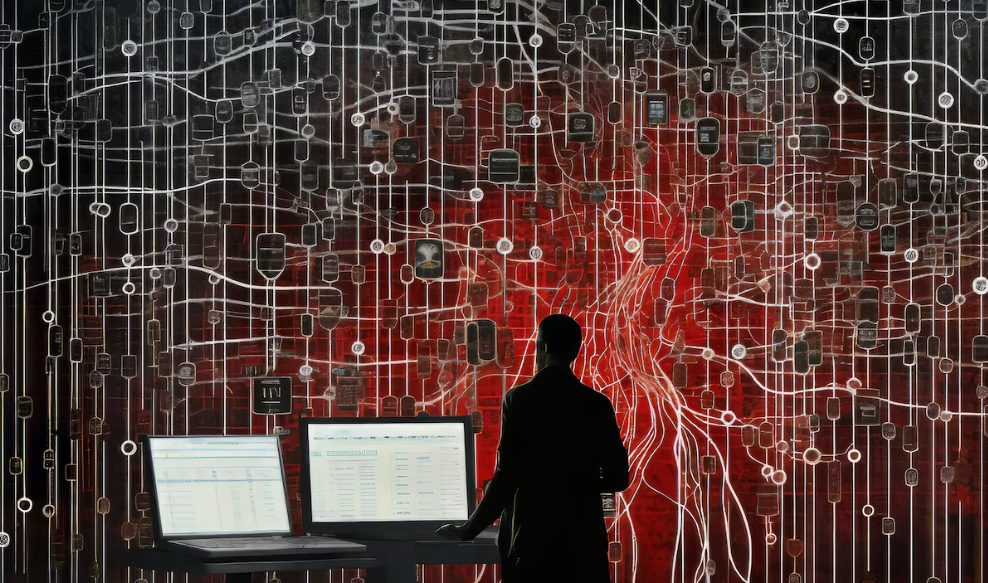Digital Forensics in India: Bridging Technology, Law, and Justice in the Cyber Age
Digital forensics plays a vital role in preventing and investigating cybercrimes in India. Technology changes fast, and the legal infrastructure keeps updating to meet emerging needs. With the increasing integration of digital devices into daily life, more sensitive data has been stored on digital media, creating substantial cybersecurity issues. The result is an explosion in computer-based crimes, and advanced forensic tools must be designed to combat cybercrime effectively.
Forensic science traditionally deals with investigating physical crimes. Similarly, digital forensics is utilised to identify and analyse cybercrimes. It is a branch of cybersecurity that deals with recovering, analysing, and examining digital evidence from electronic devices, networks, and cloud services. Law enforcement agencies employ digital forensics to investigate hacking, data breaches, fraud, identity theft, and internet scams. Companies also depend on it for cybersecurity monitoring, IT audits, and incident response to avoid data breaches and financial loss. In the digital age, all electronic devices leave behind digital trails, the primary evidence used to solve cybercrimes. Digital forensic investigation entails discovering, gathering, analysing, and maintaining such information for legal recourse. Forensic investigators can identify cyber threats and trace criminals by tracking digital footprints. The practice is constantly evolving with the help of artificial intelligence, which reinforces the capacity of forensics by automating data analysis and recognising anomalies.
This blog will delve into the core processes of digital forensics, cyber investigation tools, and the increasing influence of artificial intelligence in enhancing digital forensic methods.
TYPES OF DIGITAL FORENSICS
There are four primary types of digital forensics: computer forensics, mobile forensics, network forensics, and cloud forensics. Other types of digital forensics fall into one of these main categories. For instance, memory or disk forensics will generally fall under computer forensics depending on the storage techniques used, or wireless forensics will be categorised under network forensics.
- Computer Forensics
Computer forensics, or hardware forensics, is recovering essential data and information from computer system hardware, including desktops, laptops, removable media devices, hard drives, and other computer-related devices. This type of forensics deals with the extraction techniques from computer-related devices. This is usually done by physically accessing the investigated hardware and using special tools to extract valuable information. One of the most important objectives is to recover the erased, hidden or damaged files and preserve such evidence for use in civil or criminal investigations.
- Network Forensics
Network forensics is the process of examining computer networks and network information to evaluate cybersecurity threats and collect digital evidence. It entails the examination of file transfers, emails, web traffic, and credentials to identify cybercriminal activities. Investigators follow IP addresses, MAC addresses, and GPS coordinates to investigate crimes, react to incidents, and collect intelligence. Web forensics, a subcategory, analyses web activity such as server logs and email communications to determine evidence of cybercrime.
- Mobile Forensics
Mobile forensics is the process of retrieving and examining data from mobile phones, such as contacts, messages, GPS information, photographs, and application information. The collection of evidence is primarily through mobile networks, operating systems, and hardware information. Cloud data access and stored app data can also identify criminal activity or security incidents. With evolving mobile technology, connected devices such as tablets, PDAs, and smartwatches play a role in forensic analysis.
- Cloud Forensics
Cloud computing offers access to infrastructure, software, and applications via a network without local installation. It provides effortless access to platforms, services, and data from anywhere in the world with an internet connection. Though it is efficient and cost-saving, security is not a guarantee. Data transfer via networks provides avenues for cybercriminals to tap into vulnerabilities, which means encryption and robust cybersecurity practices are crucial to avoid data breaches and illegal access.
STAGES OF DIGITAL FORENSICS
Stage 1: Identification
The initial step is the identification of pertinent digital evidence. Investigators identify the devices and sources of data that are vital to the case, such as computers, cell phones, cloud storage, and networks. The devices are isolated to avoid tampering with data. In online servers or cloud storage cases, investigators provide limited access to ensure data integrity.
Stage 2: Preservation
After the devices are locked down, forensic specialists remove and store meaningful data with special tools. A forensic image, a complete digital replica, is made to operate without disturbing the original data. This way, evidence cannot be compromised even if the inquiry encounters unforeseen setbacks. Metadata, timestamps, and system logs are also saved to monitor alterations.
Stage 3: Examination & Analysis
Analysts sift through vast amounts of data for predefined keywords, file types, and system logs to pinpoint essential evidence. Power forensic tools assist in finding erased files, recovering encrypted data, and finding anomalies. The analysis involves determining data origins, changes, unauthorized access, and suspicious actions. Findings from this stage assist in connecting digital evidence with people, finding vulnerabilities, and making connections in criminal cases or cybersecurity audits.
Stage 4: Reporting & Presentation
The last phase is the compilation of a formatted report with findings, documentation, logs, screenshots, and forensic tool outputs. An adequately documented report has extracted evidence, forensic analysis, and expert conclusions. The report is essential for legal cases, IT security audits, and compliance audits. Investigators can also give testimony in court, describing their process and presenting evidence to substantiate legal action against cybercriminals.
ARTIFICIAL INTELLIGENCE AND DIGITAL FORENSICS
AI is revolutionising digital forensics by streamlining processes with automation, minimising human intervention, and increasing accuracy. By mimicking human logic, AI works swiftly, identifying patterns and uncovering concealed irregularities. Through AI integration, each phase of digital forensics—data collection, preservation, analysis, examination, and presentation—is empowered. AI-based tools assist investigators in handling voluminous amounts of data, revealing concealed relationships, and accelerating case closure. AI also improves security by identifying real-time threats. AI simplifies investigations through many various mediums, such as:
- Big data digital forensics Investigation
- Volatile Memory Evidence Retrieval
- File Type Identification
- Neural Network-Based Classification
- AI-Based Incident Response
- Automated Artefact Relevancy Determination
- Large-Scale E-mail Dataset Analysis
- Data Mining Methods
- Metadata Analysis Using Machine Learning
- Chain of Custody
- Memory Forensics Using Machine Learning
LEGAL CHALLENGES AND DATA PRIVACY ISSUES IN DIGITAL FORENSICS
Digital forensics in India is also confronted with substantial legal issues, especially on admissibility of electronic evidence, privacy, and procedural protection. The Bharatiya Sakshya Adhiniyam, 2023 (BSA) prescribes the admissibility of electronic records under Sections 61 to 65, which substitute Sections 65A and 65B of the Indian Evidence Act, 1872. These sections still insist on the proper certification for electronic evidence to be admitted in court. The Supreme Court, in Arjun Panditrao Khotkar v. Kailash Kushanrao Gorantyal (2020), underlined that electronic records must meet certification requirements, and thus, forensic authentication becomes essential in court proceedings.
Privacy concern is critical, particularly following the Puttaswamy judgment (2017), which recognised a right to privacy under Article 21 of the Constitution. Any digital forensic investigation should protect against data collection that interferes with the right to privacy without judicial interference. The Digital Personal Data Protection Act, 2023 (DPDPA) also creates duties in connection with data processing, including requirements of lawful, fair, and transparent treatment of personal data, which forensic examiners must remember when dealing with digital evidence.
The procedural mechanism of digital forensics in India has seen a radical shift with the passing of the Bharatiya Nagarik Suraksha Sanhita, 2023 (BNSS), which amends the Criminal Procedure Code, 1973 (CrPC). One of the significant developments is in Section 105, which requires that search and seizure operations be recorded by audio-visual electronic means. Accordingly, whenever the police officers search or seize articles, it is mandatory that they video record the whole process and produce it forthwith, along with the list of seizure, before the district magistrate, sub-divisional magistrate, or first-class judicial magistrate. This section ensures transparency and accountability in forensic investigations.
One of the major changes is that Section 176(3) requires the collection of forensic evidence in cases of crimes punishable with a sentence of seven years or more. This is a welcome change since it enhances the use of forensic science in serious criminal investigations. In the collection of evidence, Section 176(1) brings to the forefront the rights of rape victims, where they can provide statements in their homes or where they are comfortable. The law also recommends that such statements be recorded in the presence of a female officer, guardian, or social worker, and mobile or electronic recording is allowed to enable it.
Where witness statements are concerned, Section 180(3) allows the police to take statements in audio-visual form as required. Similarly, Section 54 allows video technology to record test identification parades (TIPs), which is very useful in dealing with the needs of physically or mentally disabled witnesses. Even within the courtrooms, BNSS encourages the application of digital technology. Sections 254, 265, and 266 enable courts to utilise audio-video equipment for recording the testimony of witnesses, police officers, public servants, and experts in forensic science. This makes trials easier and guarantees helpful testimonies are accurately recorded. Likewise, Section 308 enables the accused to be examined remotely through video conferencing, making the judicial process more effective, particularly where physical appearance is not feasible.
Another significant amendment falls under Section 349, an extension of Section 311A of the CrPC. It expands the scope of forensic sample collection under a magistrate’s order to enable authorities to collect fingerprints, voice samples, handwriting, and signatures—even from those not directly associated with the crime. This opens up forensics as a capability the police can use for investigations, making cases easier to crack.
The legal environment keeps changing, calling for rigorous adherence to forensic best practices, privacy laws, and procedural measures to maintain the integrity and admissibility of digital evidence before Indian courts.
CONCLUSION
Digital forensics has become a necessary tool in the fight against cybercrime, playing a vital role in investigating, analysing, and preserving digital evidence. Since there is greater reliance on technology, the number of cyber threats grows in proportion, and thus, the need arose to develop forensic techniques to combat emerging threats effectively. Artificial intelligence, big data analysis, and automation have significantly improved the effectiveness and accuracy of digital investigations, thus assisting law enforcement and private sector organisations in enhancing their cybersecurity measures.
India’s legal and procedural setup has adapted to such developments, facilitating easy execution of structured forensic examinations and proper authentication of electronic evidence. Nevertheless, to comprehensively realise the potential of digital forensics, there is a need to regularly update forensic tools, enhance technical proficiency, and balance security measures with ethics.
As cyber threats evolve and become more complex, the cooperation between forensic experts, lawyers, and policymakers will be essential to building a robust and forward-looking digital forensic infrastructure. By embracing technological innovations while ensuring legal standards and ethical guidelines, digital forensics can continue to be a valued part of cybersecurity and justice in the contemporary digital era.
Author: Kunal Singh, in case of any queries please contact/write back to us via email to chhavi@khuranaandkhurana.com or at Khurana & Khurana, Advocates and IP Attorney.



